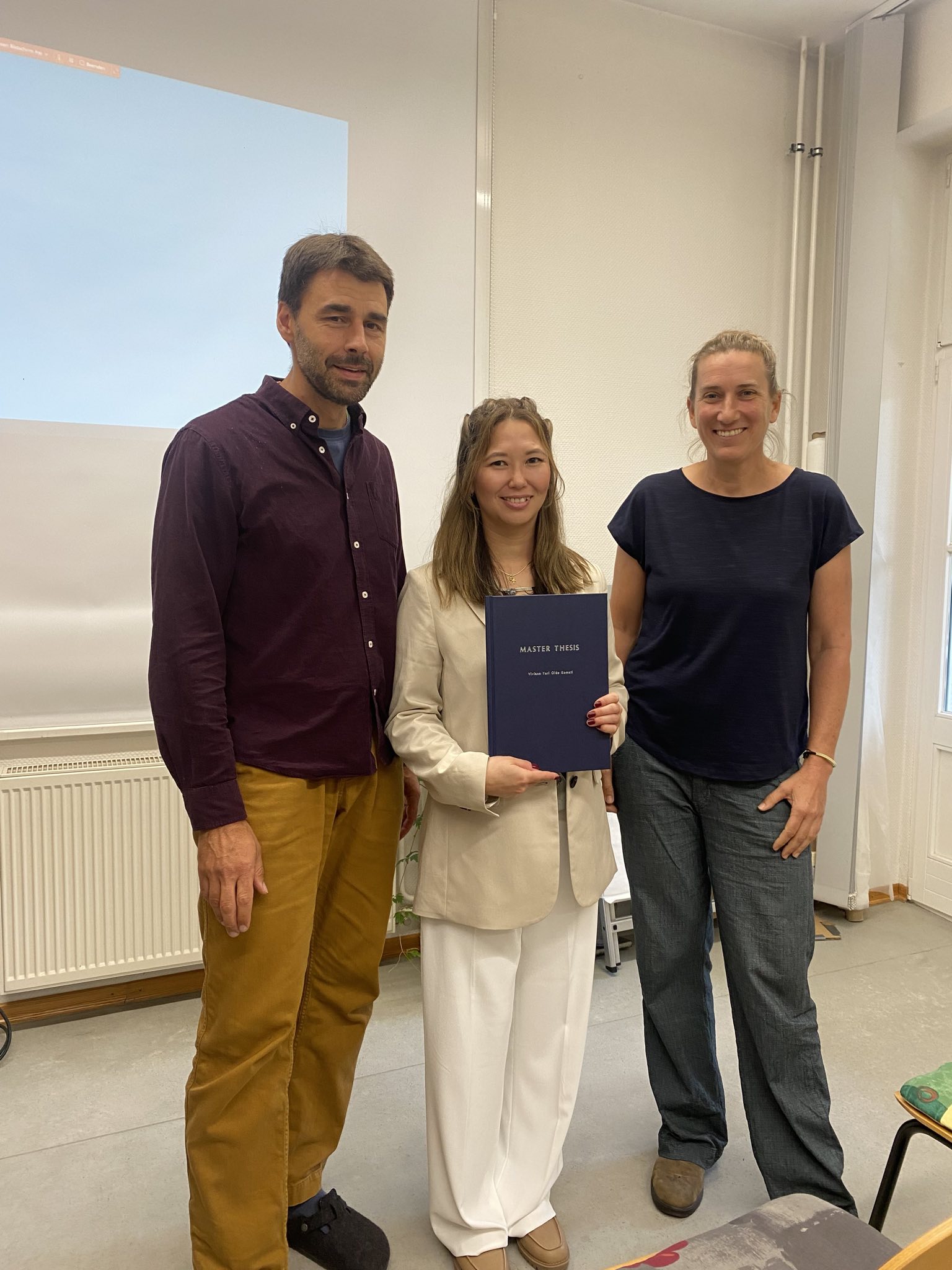Master’s thesis on bottlenose dolphins
Viviane Yuri Oide Komati recently completed her master’s thesis under the supervision of Prof. Dr. Dominik Martin-Creuzburg at the Institute for Freshwater Ecology at the Brandenburg Technical University Cottbus-Senftenberg. Graduate biologist Christina Sommer from M.E.E.R. e.V. acted as an external supervisor and second reviewer. Under the title “Factors influencing the group size and composition of bottlenose dolphins (Tursiops truncatus) in the waters off La Gomera,” Viviane analysed part of M.E.E.R. ev’s sighting database, which covers 26 years worth of data. She discovered interesting connections between the group size and group composition of bottlenose dolphins and environmental factors such as the season, sea surface temperature and bathymetry (topography of the sea floor). In the summer months (July-September) she observed larger groups with calves and juveniles, these animals also preferred higher water temperatures above 22°C. Waters with a depth of up to 1500m were found to have a further positive influence on group size. She successfully defended her thesis on August 30th in Bad Saarow. You can find the PDF of the master’s thesis on our website under “Research > Publications” and a summary of its results in English below.
Abstract
This paper provides findings of 26 years (1995-2020) of research on bottlenose dolphins’ distribution and the factors influencing group size and composition in the southwest coast of La Gomera, Canary Islands. Data was collected repeatedly in all months of the years using Wboats of a whale watching operator as platforms of opportunity, in an area encompassing and extending beyond the current Special Area of Conservation (SAC), where an estimated stable resident population of 50 animals inhabits. The relationship between grouping pattern and environmental and topographic variables (sea surface temperature, chlorophyll-a, salinity, benthic slope, bathymetry and distance to coast), social structure (presence of calves and juveniles), temporal variation (months and years) and group behavior were analyzed using different models. Group size ranged between 1 and 500 individuals (mean = 18.96, median = 13), including residents and non-residents, and varied significantly within months and across years. Significant monthly and inter-annual variations in bottlenose dolphin abundance and group composition were also observed. Abundance and larger group sizes with the presence of calves and juveniles were higher during the summer months (July-September). Sea surface temperature, bathymetry and the presence of calves and juveniles were identified as the best predictors, positively influencing bottlenose dolphins’ group size. Overall, larger group sizes tended to occur in warmer waters (> 22°C) and where bathymetry is up to 1500 m. Sea surface temperature was the only variable affecting groups with calves and juveniles, which tended to prefer warmer waters. The observed patterns are likely to be related to breeding seasonality, calving protection and prey availability. Larger groups foraging/feeding, resting, or socializing were also observed, suggesting that individuals can benefit from an increase in foraging efficiency, protection against predators and mating opportunities. This study reveals how different variables can influence bottlenose dolphin grouping patterns in the waters off La Gomera and highlights the importance of oceanic islands and coastal areas for calving and habitat use. However, the results support the need for further investigations to better understand population trends, movement patterns and prey distribution to guide potential management conservation. Finally, the present study illustrates the importance of mitigating the increasing anthropogenic threats to this species and recommends an improvement of regulations inside its borders.
